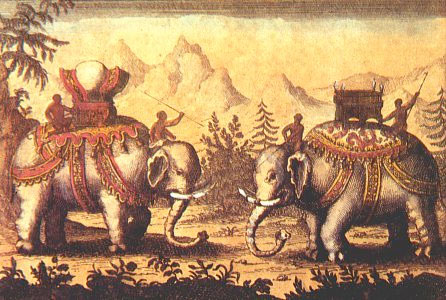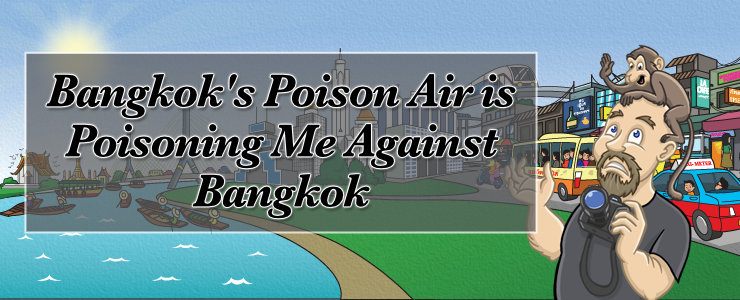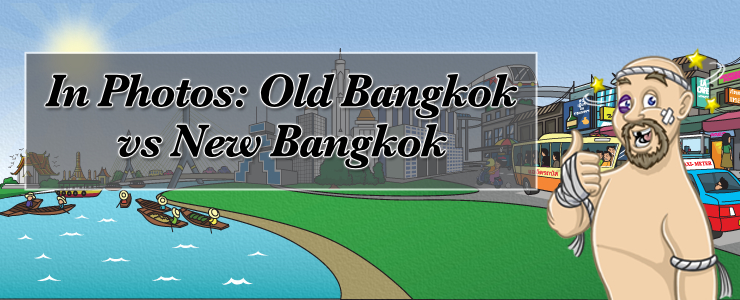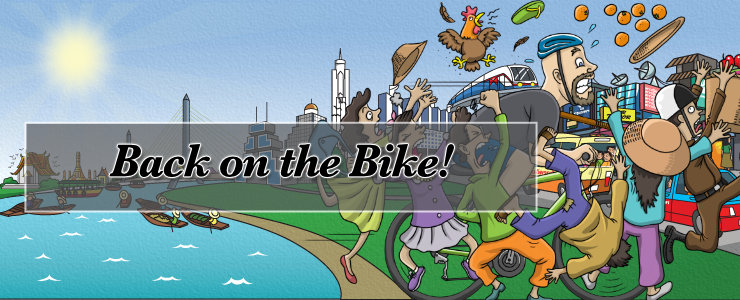If only I was as interested in history in high school as I am now, I may even have passed a class or two, instead of getting stared at by teachers bewildered as to how I made all the way to 16 without killing myself in a tragic fruit accident. At any rate, it’s a topic that sure interests me now, and one that I occasionally give a boost by doing some reading. I thought it would be neat to put up some snippets of a letter that I just finished titled A Description of Siam in 1829 by Frenchman Barthélemy Bruguière. I normally stick to more ‘accessible’ fare (coughArchiecough). but had some time to kill, and ended up really getting into it. It’s an interesting – and slightly funny – read.
Mr Bruguière was a bishop who set out from France in 1826, intending to go to Vietnam. However, the bishop who had been squawking preaching the word of God in Thailand was old and looking for someone to replace him when he died, and Bruguière volunteered. On an epic journey that I won’t get into here, he spent the better part of a year sailing on boats, waiting in villages and traipsing through jungle, up the Malay peninsula and into Bangkok.
He wrote a long and detailed letter to a friend of his back in France, and that’s what I was reading. The English translation was published in the Journal of the Siam Society vol. 96, 2008, which I got (for free!) when I joined the esteemed organization hoping to look smart get some exposure to the history of Thailand, which 21st-century farangs don’t get too much of these days.
The letter is quite long, but it’s a fascinating look at how a foreigner viewed a society as different from his own as Thai society then is to Thai society today. Some of the funniest/strangest/most interesting bits:
On the Thais in general:
“The Siamese are by nature quite gentle, frivolous, unthinking, timid and light-hearted; they like people who are gay. They are lazy, inconstant, and take pleasure in amusements; a trifle catches their attention and a trifle distracts them. They are said to have wit and to be intelligent. But, as the king takes into his service every person who succeeds in whatever profession it might be, their laziness and the state of servility they live in do not allow them to develop their talents in industry; it is the Chinese who do everything.”
On how Thais look:
“Their heads are square rather than round; their faces are flat and lozenge-shaped. Their cheeks are slightly hollow, the cheek bones, lips and the corresponding part of the jaw are slightly projecting, the nose is squashed, the eyes black and fairly wide open, the hair very black, rough and spiky. Some are copper-red in colour and others lemon-yellow. Their dress is very simple. They go barefoot and bareheaded. Their only clothes are a piece of coloured cloth they tie to their belt. They bring it round to the rear, which makes the cloth look like shorts. This is the usual dress for both men and women.”

Google Earth circa 1815. It took forever to load.
On the population:
“Siam is a very fertile country, but under-populated; it seems that the population declines by a ninth each year. So in less than a century Siam would be empty of people, if the great number of foreigners which commerce attracts did not make good the deficit. (That’s a nice way of putting it). The chief causes of this frightening reduction in population are: 1) Polygamy: the rich have many wives; the last king (Rama II) had one thousand; 2) The talapoins (monks); the number of these voluntary bachelors comprise a quarter of the men living in and around Bangkok; 3) The dirtiness of the inhabitants; they build their houses on a heap of mud, they live surrounded by pigs whose accumulated filth gives off a vile stench. They are surprised about remarks made about the dangers of such excessive uncleanness.”
On the Kingdom’s national symbol:
“Of all the quadrupeds found in the forests, the elephant is without doubt the most curious and the most useful. It is from nine to thirteen feet high, and its tusks are commonly five feet long. This is a very dangerous animal when it roams alone in the forests and cruelly kills any unfortunate traveler it comes across. Sometimes it lifts a man up in the air with its trunk, throws him down violently and runs its tusks through him; sometimes it crushes a man under its feet. Occasionally it digs a hole in the sand and buries him alive. It especially loves alcoholic drinks, but one has to be careful not to let it drink them, for when drunk it does not acknowledge any master.” Thirteen feet high? Burying people alive? Sounds like Bruguière had been hitting a bit of the sauce in his downtime.
On gender (in)equality:
“Women are more or less slaves of their husbands. They never eat with their husbands; in their presence, they contrive not to be at the same level as them. If a woman positioned herself somewhere where she was at a higher level than her husband, or if she accidentally displayed a handkerchief or a belt above the level of his head, nothing more would be needed to upset the household and perhaps lead to open rupture. The husband would consider this an insult and incontestable proof that his wife sought to dominate the household. An Asian could never be persuaded that a woman is a person important enough for a sensible man to be in the least concerned about, or to take an interest in her health. The law allows a husband the right to beat his wife, dismiss her or sell her as a slave. He is allowed to kill her in only one instance. These rights are not reciprocal.”
I do believe that a 21st-century Thai woman could probably wipe out an entire village of 19th-century Thai men. How times have changed.

The tragic last moments before a Bangkok traffic accident in 1829.
On Thailand’s grasp of science:
“In Siam the sciences are no more flourishing than the arts. Learned Siamese know just about how to read and write. They have no idea of physics or astronomy. Mathematics is totally unknown to them. They have, though, some notion of arithmetic; they express quantities with the aid of ten figures, 0-9. They are not better informed about geography than other sciences. They think all the towns they hear about are so many kingdoms. It takes some time to explain to them that, for example, one can be both French and a native of Narbonne at the same time. I have had people ask in all seriousness if the Kaffirs originally came from France.“
On the famous Thai love of food:
“The Siamese eat at seven in the morning and about five or six in the evening; at midday respectable people have a light meal. They have neither spoons, nor forks, nor knives; they have just a small mother-of-pearl spoon for taking food from the dishes, and their fingers do everything else. Quite often their nails are used as toothpicks, knives and to clean their ears. Mealtimes are sacred. If the master needs his slave for an urgent matter when the slave is eating, he waits until he has finished or calls someone else.”
In terms of ignoring the world when eating, it doesn’t sound too different from today, actually.
And finally, on their perception of foreigners:
“They despise Europeans because they have large noses, blond hair, white teeth, pink cheeks, and mostly big blue eyes. It is the subject of blue eyes which troubles them the most, because they hate all animals with eyes that are blue. Our dress, our way of sitting, and eating, the European habit of going for walks, makes them laugh greatly at our expense. They cannot hide their indignation when they see European ladies sit down at table, leave their houses, go for walks, and ride horses. “What!” they say, “how can a civilized nation tolerate such abuses? Can one even think that a man has so little consideration of himself to allow a woman to eat with him?”
Of course, this all pales to my all-time favorite description of foreigners by 18th-century Thais:
“They are exceedingly tall, hairy and evil-smelling. They school their children long and devote their lives to amassing wealth. Their women, though large and round, are beautiful. They do not grow rice.”





I love to read such old texts, usually full of prejudices and cultural misunderstandings, and also the writing style has changed a lot in the meantime.
By the way, http://www.catholic-hierarchy.org/bishop/bbrugui.html“ rel=”nofollow”>Barthélemy Bruguière was Coadjutor Vicar Apostolic (i.e. assistant bishops) of Siam 1828-1931, when he was promoted to become first bishop of Corea.
I was thinking to join the Siam Society for some time already, but as being in Thailand only few weeks a year most of their offers are not accessible to me, just the journal I could use here as well.
How some things never change – great post GJ!
Anna Leonowens made some similar observations about the Thai character. I wish I could find them again.
“Full of prejudices and cultural misunderstandings”? – to me sounds like many things have not changed, except that the long nosed smelly ones now are too Politically Correct to say what they really think.
As to the Thai ideals of Farangs changing:
I was talking with a girl who was working in a hotel, just moved to Bangkok recently. She told me that in her family had warned her that Farangs have big dicks and like sex too much – way to go, I am sure that will keep your 20 year old daughter away from the foreigners, better I think to stick with the hairy and smelly rumours, they’d work better.
Ahh, biggest dude, never a boring post. True, much has remained the same, but I do think the relative quaintness is part of why we love Thailand. And true… that girl’s parent’s could probably have come up with more convincing argument to stay away from farang. It’s like telling your kid that “Crack is bad, but it feels so damn good! Don’t do it!”